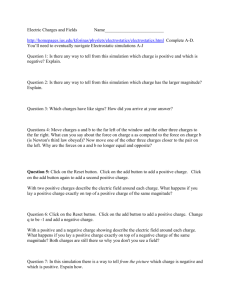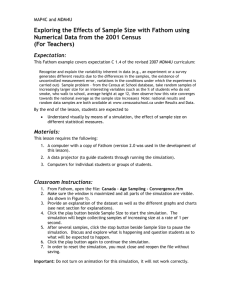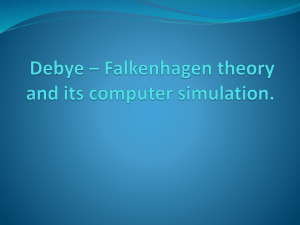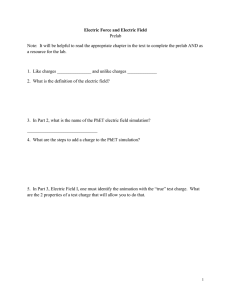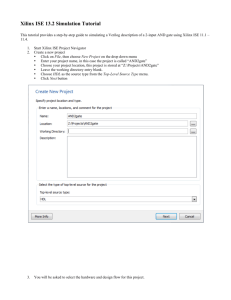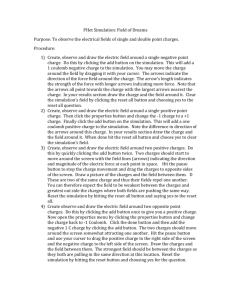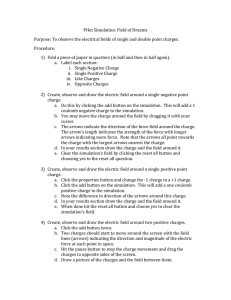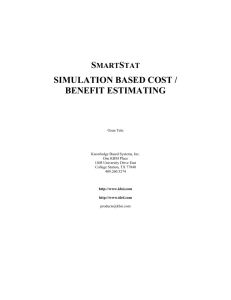Electrostatics Activity Questions
advertisement
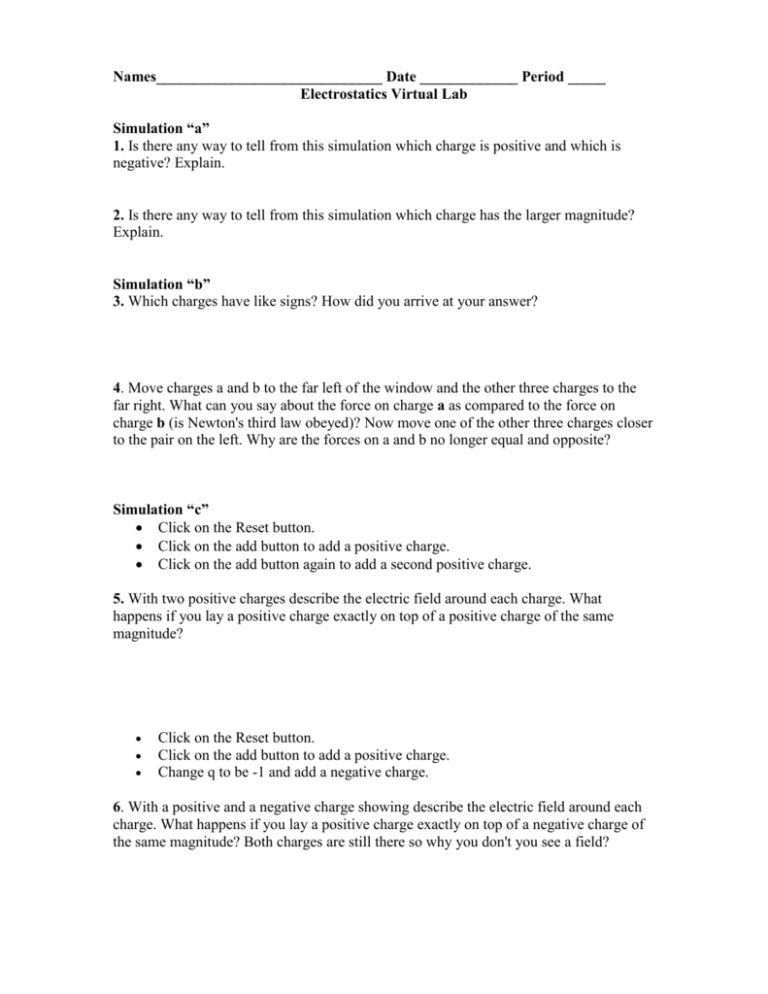
Names______________________________ Date _____________ Period _____ Electrostatics Virtual Lab Simulation “a” 1. Is there any way to tell from this simulation which charge is positive and which is negative? Explain. 2. Is there any way to tell from this simulation which charge has the larger magnitude? Explain. Simulation “b” 3. Which charges have like signs? How did you arrive at your answer? 4. Move charges a and b to the far left of the window and the other three charges to the far right. What can you say about the force on charge a as compared to the force on charge b (is Newton's third law obeyed)? Now move one of the other three charges closer to the pair on the left. Why are the forces on a and b no longer equal and opposite? Simulation “c” Click on the Reset button. Click on the add button to add a positive charge. Click on the add button again to add a second positive charge. 5. With two positive charges describe the electric field around each charge. What happens if you lay a positive charge exactly on top of a positive charge of the same magnitude? Click on the Reset button. Click on the add button to add a positive charge. Change q to be -1 and add a negative charge. 6. With a positive and a negative charge showing describe the electric field around each charge. What happens if you lay a positive charge exactly on top of a negative charge of the same magnitude? Both charges are still there so why you don't you see a field? 7. In this simulation there is a way to tell from the picture which charge is negative and which is positive. Expain how. Simulation “g” 13. In which region(s) is the electric field uniform or very nearly uniform (where do the vectors have the same color and direction)? In which region(s) is the electric field non-uniform? Simulation “h” 16. Which direction does the force on the test charge point relative to the electric field vectors? Simulation “i” 18. Start the test charge with the default values of at x=0, y=2, vy=0. Describe the motion. How does the direction the test charge travels compare with the direction of the force on the test charge? 19. Run the simulation several times with x=0, y=2 and the y velocity (vy) set to different negative values between -1 and -5 and describe the motion. How does the direction the test charge travels compare with the direction of the force on the test charge? 20. In simulation H you found that the force on a test charge is in the same direction as the electric field and perpendicular to the eqipotential surfaces. In the previous question, then, why doesn't the test charge move in the direction the electric field vectors point (and perpendicularly across the equipotential surfaces) in these cases? Explain.
